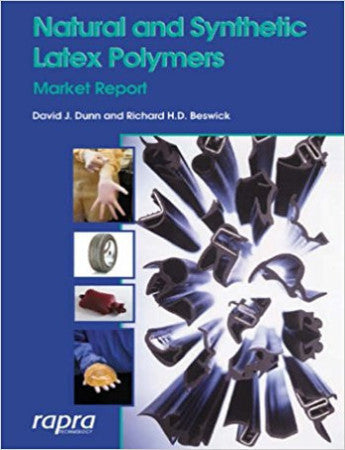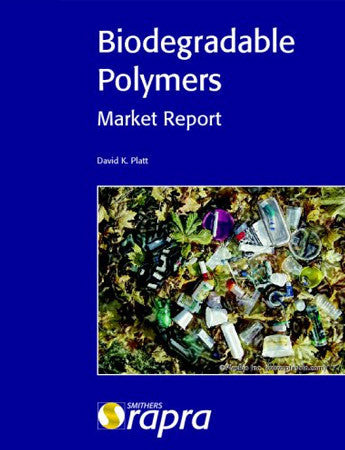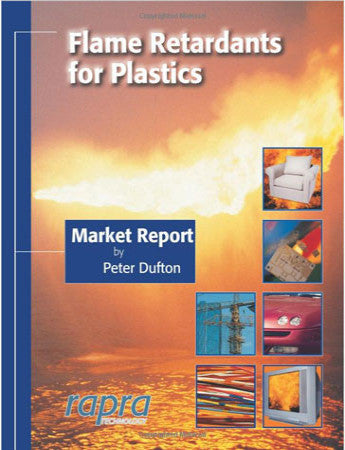Natural and Synthetic Latex Polymers
This latex market report gives a comprehensive introduction to both natural and synthetic polymers in one volume. This is a “hot” subject because of the tremendous changes in the market. These have arisen from the increased use of disposable gloves in the medical industry and the search for elastomers which do not promote allergic reactions. Also, latex products are being used extensively as alternatives to solvent-based systems such as adhesives, sealants, and coatings, because of global legislation concerning the use of volatile and flammable solvents.
The range of applications of latex is extensive. Polymer latices are used in paints and coatings, textiles, non-wovens, packaging, construction (mainly in adhesives and binders), furniture, packaging, paper (e.g., coatings), medical equipment, personal protective equipment, carpet backing, adhesives, polish, belts, seals, etc.
The global annual consumption of natural rubber latex is running at just over 7 million tons. Natural rubber latex is particularly widely used in medical gloves, thread and condom applications. Gloves are by far the largest market sector, consuming around 60% by weight. The market is being driven by the advent of AIDS and other pandemic diseases, and the need to protect healthcare workers from infection. Production quality must be high to eliminate pinholes and provide an adequate barrier. This is a very competitive market and much of the production industry has been moved to Asia to reduce costs. This, in turn, has to lead to new standards being introduced, such as the Standard Malaysian Gloves (SMG).
Natural rubber latex is discussed in depth in this report from cultivation practices to manufacturing methods and new developments. Allergic reactions have been reported to residual proteins in latex. The nature, incidence and potential market impact of this are discussed. Attempts are being made to replace natural rubber with synthetics, but currently, this is not generally cost effective. The key properties of natural latex are described in the report.
A wide range of synthetic latices is available including styrene-butadiene copolymers (SBR), acrylonitrile-butadiene copolymers, polychloroprene, acrylic polymers, vinyl acetate polymers, vinyl acetate-ethylene polymers, vinyl chloride polymers and copolymers, polybutadiene and polyisoprene. SBR is the most commonly used synthetic latex – around 2.4 million tons are consumed globally each year. This report describes production methods, applications, and markets.
The worldwide structure of the latex industry is outlined here. The natural rubber industry in Asian countries, North America and Europe are described. Asia is the key area for production.
The latex market is spread across the globe, making it less sensitive to regional fluctuations and economic cycles. Application areas are growing with the requirements for medical gloves and condoms, and the use of latices as substitutes for solvent-based systems.
This Rapra Natural and Synthetic Latex Polymers Market Report provide an excellent, clear overview of the whole of the latex industry from production and manufacturing methods to market applications, new technology and potential for growth.
The range of applications of latex is extensive. Polymer latices are used in paints and coatings, textiles, non-wovens, packaging, construction (mainly in adhesives and binders), furniture, packaging, paper (e.g., coatings), medical equipment, personal protective equipment, carpet backing, adhesives, polish, belts, seals, etc.
The global annual consumption of natural rubber latex is running at just over 7 million tons. Natural rubber latex is particularly widely used in medical gloves, thread and condom applications. Gloves are by far the largest market sector, consuming around 60% by weight. The market is being driven by the advent of AIDS and other pandemic diseases, and the need to protect healthcare workers from infection. Production quality must be high to eliminate pinholes and provide an adequate barrier. This is a very competitive market and much of the production industry has been moved to Asia to reduce costs. This, in turn, has to lead to new standards being introduced, such as the Standard Malaysian Gloves (SMG).
Natural rubber latex is discussed in depth in this report from cultivation practices to manufacturing methods and new developments. Allergic reactions have been reported to residual proteins in latex. The nature, incidence and potential market impact of this are discussed. Attempts are being made to replace natural rubber with synthetics, but currently, this is not generally cost effective. The key properties of natural latex are described in the report.
A wide range of synthetic latices is available including styrene-butadiene copolymers (SBR), acrylonitrile-butadiene copolymers, polychloroprene, acrylic polymers, vinyl acetate polymers, vinyl acetate-ethylene polymers, vinyl chloride polymers and copolymers, polybutadiene and polyisoprene. SBR is the most commonly used synthetic latex – around 2.4 million tons are consumed globally each year. This report describes production methods, applications, and markets.
The worldwide structure of the latex industry is outlined here. The natural rubber industry in Asian countries, North America and Europe are described. Asia is the key area for production.
The latex market is spread across the globe, making it less sensitive to regional fluctuations and economic cycles. Application areas are growing with the requirements for medical gloves and condoms, and the use of latices as substitutes for solvent-based systems.
This Rapra Natural and Synthetic Latex Polymers Market Report provide an excellent, clear overview of the whole of the latex industry from production and manufacturing methods to market applications, new technology and potential for growth.
1 Introduction
1.1 The World of Latex
1.2 Scope of the Report
1.3 Geographical Focus
1.4 Methodology
1.5 Authorship
1.6 Units
2 Executive Summary
2.1 Market Size
2.2 Natural Rubber Latex
2.3 Synthetic Latex
3 Natural Latex
3.1 Natural Rubber Latex (NRL)
3.2 History of Natural Rubber
3.3 Developments in Natural Rubber Production
3.3.1 Plantation Productivity
3.3.2 Molecular Engineering
3.3.3 Diseases
3.4 Production of Natural Rubber Latex
3.4.1 Agronomy
3.4.2 Ecology
3.4.3 Composition
3.4.4 Harvesting
3.4.5 Preservation
3.4.6 Concentration
3.4.7 Latex Storage
3.4.8 Commercial Forms of Latex
3.4.9 Vulcanisation
3.5 Properties of Natural Rubber Latex
3.6 Supply of Natural Latex
References
4 Synthetic Latex
4.1 Latex Types
4.1.1 Styrene-Butadiene Rubber (SBR)
4.1.2 Acrylonitrile-Butadiene Copolymers (NBR Latex)
4.1.3 Polychloroprene (CR)
4.1.4 Vinyl Ester Polymers
4.1.5 Acrylic Polymers, Including Vinyl Acrylics and Styrene Acrylics
4.1.6 Ethylene-Vinyl Chloride Copolymers (EVCL)
4.1.7 Polybutadiene
4.1.8 Synthetic Polyisoprene (IR)
4.1.9 Other Speciality Latices
4.1.9.1 Polyvinylidene Chloride (PVDC)
4.1.9.2 Polyacrylonitrile (PAN)
4.1.9.3 Polyvinyl Pyridine
4.1.9.4 Butyl Rubber
4.1.9.5 Fluoropolymers
4.1.9.6 Chlorosulfonated Polyethylene Latex (CSM Latex)
4.2 Compounding and Processing of Rubber Latex
4.2.1 Compounding
4.2.2 Foaming
4.2.3 Dip Moulding
4.2.3.1 Forms/Mandrels
4.2.3.2 Coagulant Dip
4.2.3.3 Dipping
4.2.3.4 Drying and Vulcanising
4.2.3.5 Beading
4.2.3.6 Leaching
4.2.3.7 Stripping
4.2.3.8 Production Machinery
4.2.4 Spraying
4.2.5 Sheeting
4.2.6 Extrusion
References
5 Applications for Latex
5.1 Medical and Hygiene
5.1.1 Medical Gloves
5.1.2 Condoms
5.1.3 Other Medical and Hygiene Applications
5.2 Building and Construction
5.2.1 Concrete Modification
5.2.2 Asphalt Modification
5.2.3 Adhesives and Sealants
5.3 Textiles and Non-Woven Fabrics
5.3.1 Textiles
5.3.2 Non-Woven Fabrics
5.3.3 Important Characteristics of Latices for Textile and Non-Woven Applications
5.3.4 Types of Latex Binders
5.3.5 Manufacturing of Non-Wovens
5.3.5.1 Saturation Bonding
5.3.5.2 Foam Bonding
5.3.5.3 Spray Bonding
5.3.5.4 Print Bonding
5.3.6 Applications for Latex Bonded Non-Wovens
5.3.7 Developments in Non-Wovens
5.4 Paint and Coatings
5.5 Paper
5.6 Printing Inks
5.7 Furniture
5.7.1 Foam
5.7.2 Adhesives
5.8 Carpets
5.9 Packaging
5.10 Industrial
5.10.1 Adhering Rubber to Fabrics
5.10.2 Industrial Gloves
5.10.2.1 Clean Room Gloves
5.10.2.2 Food Contact Gloves
5.10.2.3 Industrial Gloves
5.10.3 Other Industrial Applications
5.11 Consumer Products
5.12 Adhesives and Sealants
5.13 Floor Polishes
References
6 New Developments in Latex
6.1 Natural Latex
6.1.1 Latex Stimulants
6.1.2 Alternative Sources of Natural Rubber
6.1.3 Solutions to the Natural Rubber Allergy Issue
6.1.3.1 Leaching
6.1.3.2 Chlorination
6.1.3.3 Proteolytic Enzymes
6.1.3.4 Fumed Silica
6.1.3.5 Other Technologies
6.1.3.6 Commercially Available Low Protein Latices
6.1.3.7 Glove Powder Evaluation
6.1.3.8 Polymer Coating
6.1.4 Other Developments
6.2 Synthetic Latex
6.2.1 Heterogeneous Emulsion Particles
6.2.2 Gradient Polymer Morphologies
6.2.3 Controlled Free Radical Polymerisation
6.2.4 New Cure Methods
6.2.5 Low VOC Latex
References
7 Consumption by Global Region and Material Type
7.1 Global Demand for Latex
7.2 Regional Demand For Latex
7.3 Demand by Material Type
7.4 Demand by Market Segment
Reference
8 Natural Rubber Latex Industry Structure
8.1 Plantations and Harvesting of Natural Rubber
8.2 Natural Rubber Latex Processing
8.3 Natural Rubber Latex Products Manufacturing
8.4 Natural Rubber Latex Marketing
8.5 National and Regional Rubber Industry Profiles
8.5.1 Malaysia
8.5.1.1 Rubber Products Industry
8.5.1.2 Technology Trends
8.5.1.3 Standard Malaysian Gloves (SMG)
8.5.2 Thai Rubber Latex Industry
8.5.3 Indonesian Rubber Latex Industry
8.5.4 Vietnamese Rubber Latex Industry
8.5.5 Indian Rubber Latex Industry
8.5.6 Chinese Rubber Latex Industry
8.5.7 North American Rubber Latex Industry
8.5.8 European Rubber Latex Industry
8.6 Trade in Natural Rubber Latex
8.7 Prices of Natural Rubber Latex
8.8 INRA and ITRC
8.9 Examples of Latex Product Manufacturers
8.9.1 Malaysian Manufacturers of Latex Products
8.9.2 Thai Manufacturers of Latex Products
8.9.3 Chinese Manufacturers of Latex Products
8.9.4 Indian Manufacturers of Latex Products
8.9.5 US Manufacturers of Latex Products
8.9.6 European Manufacturers of Latex Products
References
9 Synthetic Latex Industry Structure
9.1 Leading Manufacturers
9.1.1 Competitive Strategies
9.2 Mergers and Acquisition
9.3 Manufacturers of Specific Latex Types
9.4 Prices of Synthetic Latex
10 Regulations and Environmental Issues
10.1 Health and Safety
10.1.1 Emissions from Bonded Carpets
10.1.2 Lowering Volatile Organic Component (VOC) Levels
10.1.3 Residual Monomers in Synthetic Latices
10.1.4 Issues Relating to Additives in Rubber Latex
10.1.5 Formaldehyde
10.1.6 The Natural Latex Allergy Issue
10.2 Environmental Issues - Recycling and Waste Disposal
10.2.1 Recycling of Carpets
10.2.2 Re-Pulpability of Paper Coatings and Adhesives
10.2.3 Heavy Metal Effluents from Latex
11 Influences and Trends in Latices to 2005
11.1 Future Prospects for the Latex Industry
11.1.1 Market Drivers
11.1.2 Market Restraints
11.2 International Forecast 2003-2005 by Region
References
12 Companies and Associations
12.1 International and National Associations and Organisations
12.2 Media
Glossary of Terms
Abbreviations and Acronyms
1.1 The World of Latex
1.2 Scope of the Report
1.3 Geographical Focus
1.4 Methodology
1.5 Authorship
1.6 Units
2 Executive Summary
2.1 Market Size
2.2 Natural Rubber Latex
2.3 Synthetic Latex
3 Natural Latex
3.1 Natural Rubber Latex (NRL)
3.2 History of Natural Rubber
3.3 Developments in Natural Rubber Production
3.3.1 Plantation Productivity
3.3.2 Molecular Engineering
3.3.3 Diseases
3.4 Production of Natural Rubber Latex
3.4.1 Agronomy
3.4.2 Ecology
3.4.3 Composition
3.4.4 Harvesting
3.4.5 Preservation
3.4.6 Concentration
3.4.7 Latex Storage
3.4.8 Commercial Forms of Latex
3.4.9 Vulcanisation
3.5 Properties of Natural Rubber Latex
3.6 Supply of Natural Latex
References
4 Synthetic Latex
4.1 Latex Types
4.1.1 Styrene-Butadiene Rubber (SBR)
4.1.2 Acrylonitrile-Butadiene Copolymers (NBR Latex)
4.1.3 Polychloroprene (CR)
4.1.4 Vinyl Ester Polymers
4.1.5 Acrylic Polymers, Including Vinyl Acrylics and Styrene Acrylics
4.1.6 Ethylene-Vinyl Chloride Copolymers (EVCL)
4.1.7 Polybutadiene
4.1.8 Synthetic Polyisoprene (IR)
4.1.9 Other Speciality Latices
4.1.9.1 Polyvinylidene Chloride (PVDC)
4.1.9.2 Polyacrylonitrile (PAN)
4.1.9.3 Polyvinyl Pyridine
4.1.9.4 Butyl Rubber
4.1.9.5 Fluoropolymers
4.1.9.6 Chlorosulfonated Polyethylene Latex (CSM Latex)
4.2 Compounding and Processing of Rubber Latex
4.2.1 Compounding
4.2.2 Foaming
4.2.3 Dip Moulding
4.2.3.1 Forms/Mandrels
4.2.3.2 Coagulant Dip
4.2.3.3 Dipping
4.2.3.4 Drying and Vulcanising
4.2.3.5 Beading
4.2.3.6 Leaching
4.2.3.7 Stripping
4.2.3.8 Production Machinery
4.2.4 Spraying
4.2.5 Sheeting
4.2.6 Extrusion
References
5 Applications for Latex
5.1 Medical and Hygiene
5.1.1 Medical Gloves
5.1.2 Condoms
5.1.3 Other Medical and Hygiene Applications
5.2 Building and Construction
5.2.1 Concrete Modification
5.2.2 Asphalt Modification
5.2.3 Adhesives and Sealants
5.3 Textiles and Non-Woven Fabrics
5.3.1 Textiles
5.3.2 Non-Woven Fabrics
5.3.3 Important Characteristics of Latices for Textile and Non-Woven Applications
5.3.4 Types of Latex Binders
5.3.5 Manufacturing of Non-Wovens
5.3.5.1 Saturation Bonding
5.3.5.2 Foam Bonding
5.3.5.3 Spray Bonding
5.3.5.4 Print Bonding
5.3.6 Applications for Latex Bonded Non-Wovens
5.3.7 Developments in Non-Wovens
5.4 Paint and Coatings
5.5 Paper
5.6 Printing Inks
5.7 Furniture
5.7.1 Foam
5.7.2 Adhesives
5.8 Carpets
5.9 Packaging
5.10 Industrial
5.10.1 Adhering Rubber to Fabrics
5.10.2 Industrial Gloves
5.10.2.1 Clean Room Gloves
5.10.2.2 Food Contact Gloves
5.10.2.3 Industrial Gloves
5.10.3 Other Industrial Applications
5.11 Consumer Products
5.12 Adhesives and Sealants
5.13 Floor Polishes
References
6 New Developments in Latex
6.1 Natural Latex
6.1.1 Latex Stimulants
6.1.2 Alternative Sources of Natural Rubber
6.1.3 Solutions to the Natural Rubber Allergy Issue
6.1.3.1 Leaching
6.1.3.2 Chlorination
6.1.3.3 Proteolytic Enzymes
6.1.3.4 Fumed Silica
6.1.3.5 Other Technologies
6.1.3.6 Commercially Available Low Protein Latices
6.1.3.7 Glove Powder Evaluation
6.1.3.8 Polymer Coating
6.1.4 Other Developments
6.2 Synthetic Latex
6.2.1 Heterogeneous Emulsion Particles
6.2.2 Gradient Polymer Morphologies
6.2.3 Controlled Free Radical Polymerisation
6.2.4 New Cure Methods
6.2.5 Low VOC Latex
References
7 Consumption by Global Region and Material Type
7.1 Global Demand for Latex
7.2 Regional Demand For Latex
7.3 Demand by Material Type
7.4 Demand by Market Segment
Reference
8 Natural Rubber Latex Industry Structure
8.1 Plantations and Harvesting of Natural Rubber
8.2 Natural Rubber Latex Processing
8.3 Natural Rubber Latex Products Manufacturing
8.4 Natural Rubber Latex Marketing
8.5 National and Regional Rubber Industry Profiles
8.5.1 Malaysia
8.5.1.1 Rubber Products Industry
8.5.1.2 Technology Trends
8.5.1.3 Standard Malaysian Gloves (SMG)
8.5.2 Thai Rubber Latex Industry
8.5.3 Indonesian Rubber Latex Industry
8.5.4 Vietnamese Rubber Latex Industry
8.5.5 Indian Rubber Latex Industry
8.5.6 Chinese Rubber Latex Industry
8.5.7 North American Rubber Latex Industry
8.5.8 European Rubber Latex Industry
8.6 Trade in Natural Rubber Latex
8.7 Prices of Natural Rubber Latex
8.8 INRA and ITRC
8.9 Examples of Latex Product Manufacturers
8.9.1 Malaysian Manufacturers of Latex Products
8.9.2 Thai Manufacturers of Latex Products
8.9.3 Chinese Manufacturers of Latex Products
8.9.4 Indian Manufacturers of Latex Products
8.9.5 US Manufacturers of Latex Products
8.9.6 European Manufacturers of Latex Products
References
9 Synthetic Latex Industry Structure
9.1 Leading Manufacturers
9.1.1 Competitive Strategies
9.2 Mergers and Acquisition
9.3 Manufacturers of Specific Latex Types
9.4 Prices of Synthetic Latex
10 Regulations and Environmental Issues
10.1 Health and Safety
10.1.1 Emissions from Bonded Carpets
10.1.2 Lowering Volatile Organic Component (VOC) Levels
10.1.3 Residual Monomers in Synthetic Latices
10.1.4 Issues Relating to Additives in Rubber Latex
10.1.5 Formaldehyde
10.1.6 The Natural Latex Allergy Issue
10.2 Environmental Issues - Recycling and Waste Disposal
10.2.1 Recycling of Carpets
10.2.2 Re-Pulpability of Paper Coatings and Adhesives
10.2.3 Heavy Metal Effluents from Latex
11 Influences and Trends in Latices to 2005
11.1 Future Prospects for the Latex Industry
11.1.1 Market Drivers
11.1.2 Market Restraints
11.2 International Forecast 2003-2005 by Region
References
12 Companies and Associations
12.1 International and National Associations and Organisations
12.2 Media
Glossary of Terms
Abbreviations and Acronyms
bms is a market research and consultancy organisation which aims to provide actionable marketing information. Richard Beswick has 22 years of experience in industrial marketing and market research.
Dr. Dave Dunn is a senior associate at bms North America with training as a chemist and a background in both industrial and academic circles. He has been a Vice President of Loctite Corporation, a specialty adhesive and sealant Company. The authors are based in Europe and North America respectively, giving them an ideal base for this report.
The authors have organised the Latex 2001 and Latex 2002 conferences for Rapra and given presentations on the current state of the latex industry.
Dr. Dave Dunn is a senior associate at bms North America with training as a chemist and a background in both industrial and academic circles. He has been a Vice President of Loctite Corporation, a specialty adhesive and sealant Company. The authors are based in Europe and North America respectively, giving them an ideal base for this report.
The authors have organised the Latex 2001 and Latex 2002 conferences for Rapra and given presentations on the current state of the latex industry.




